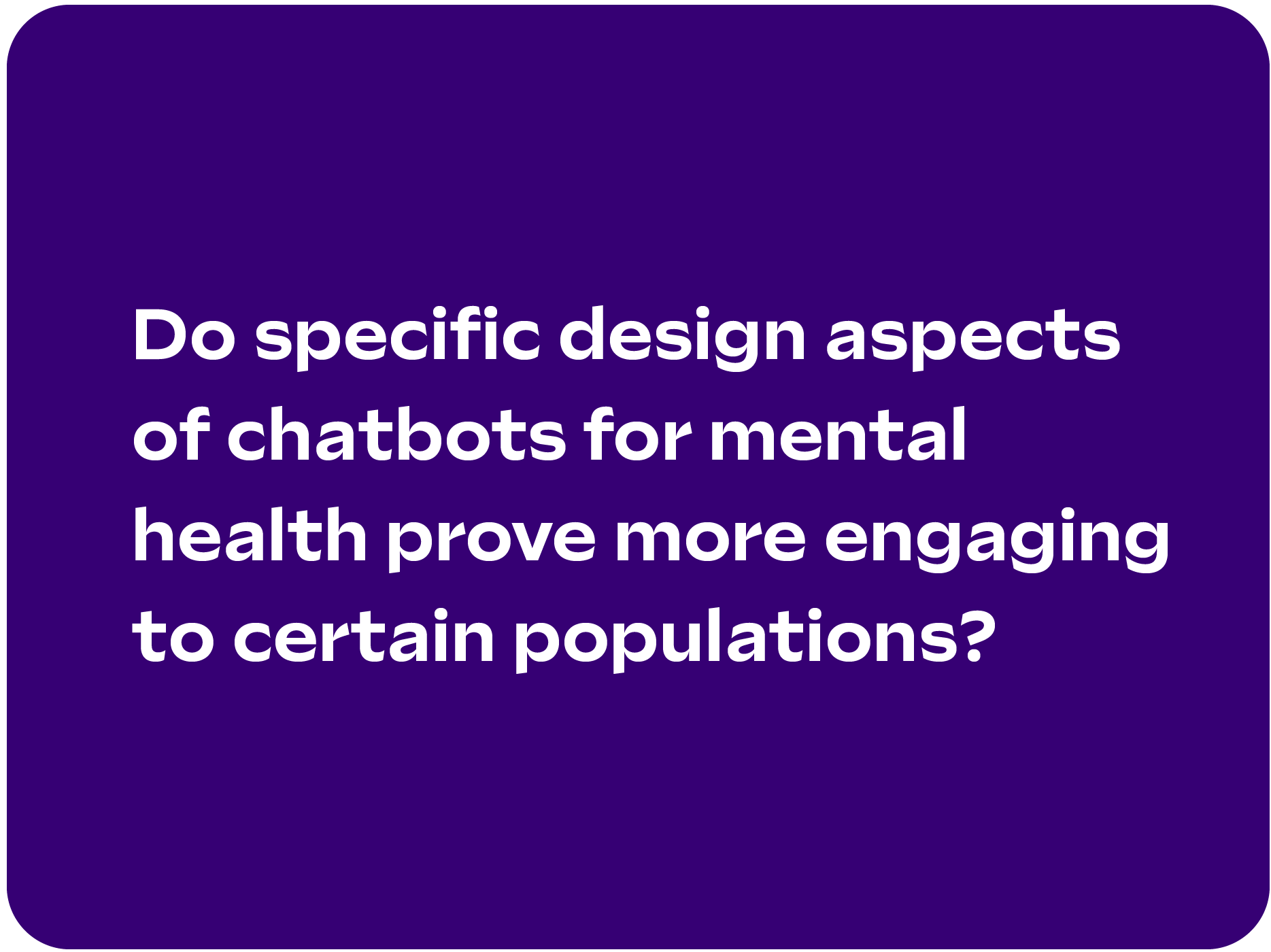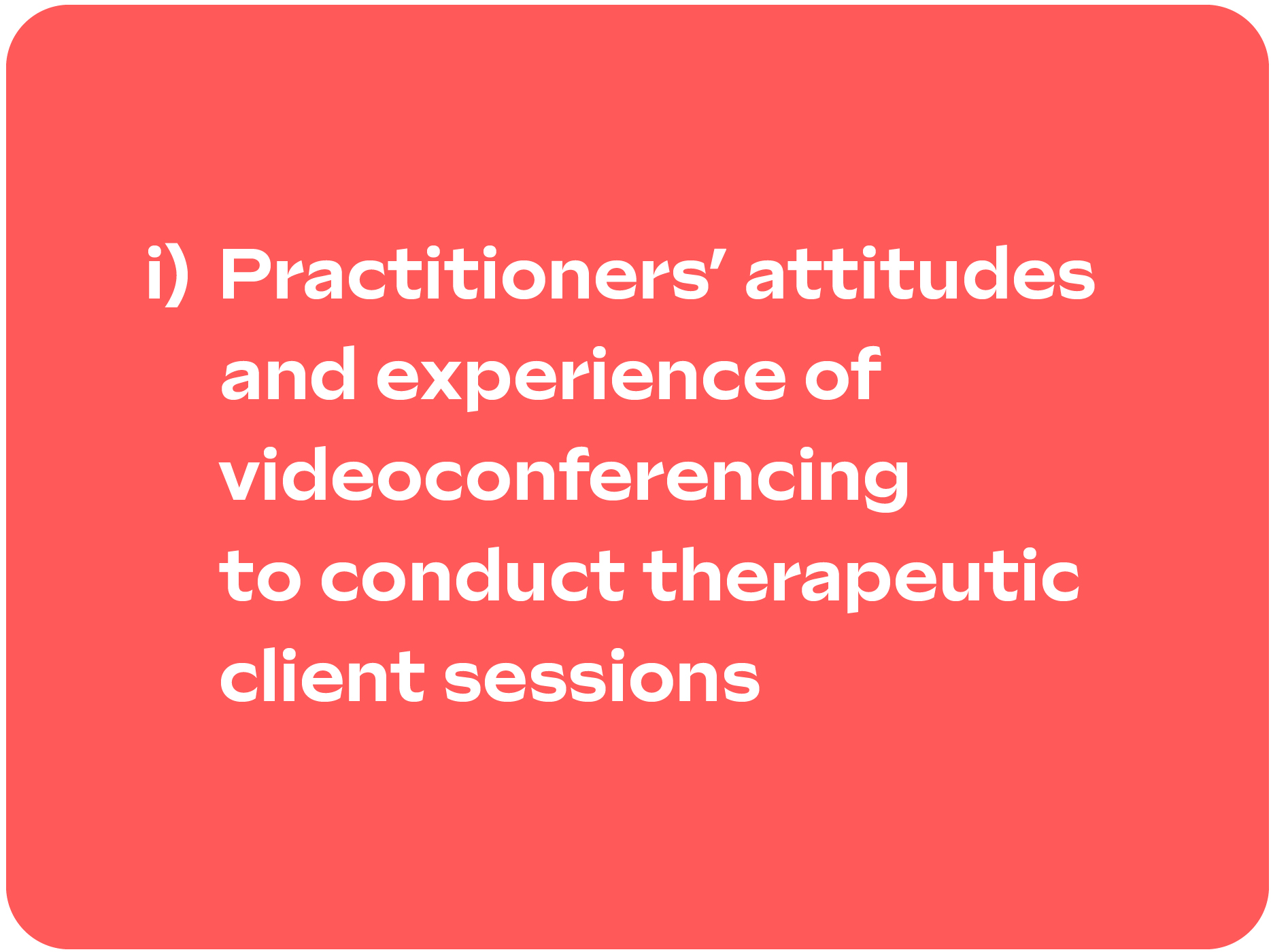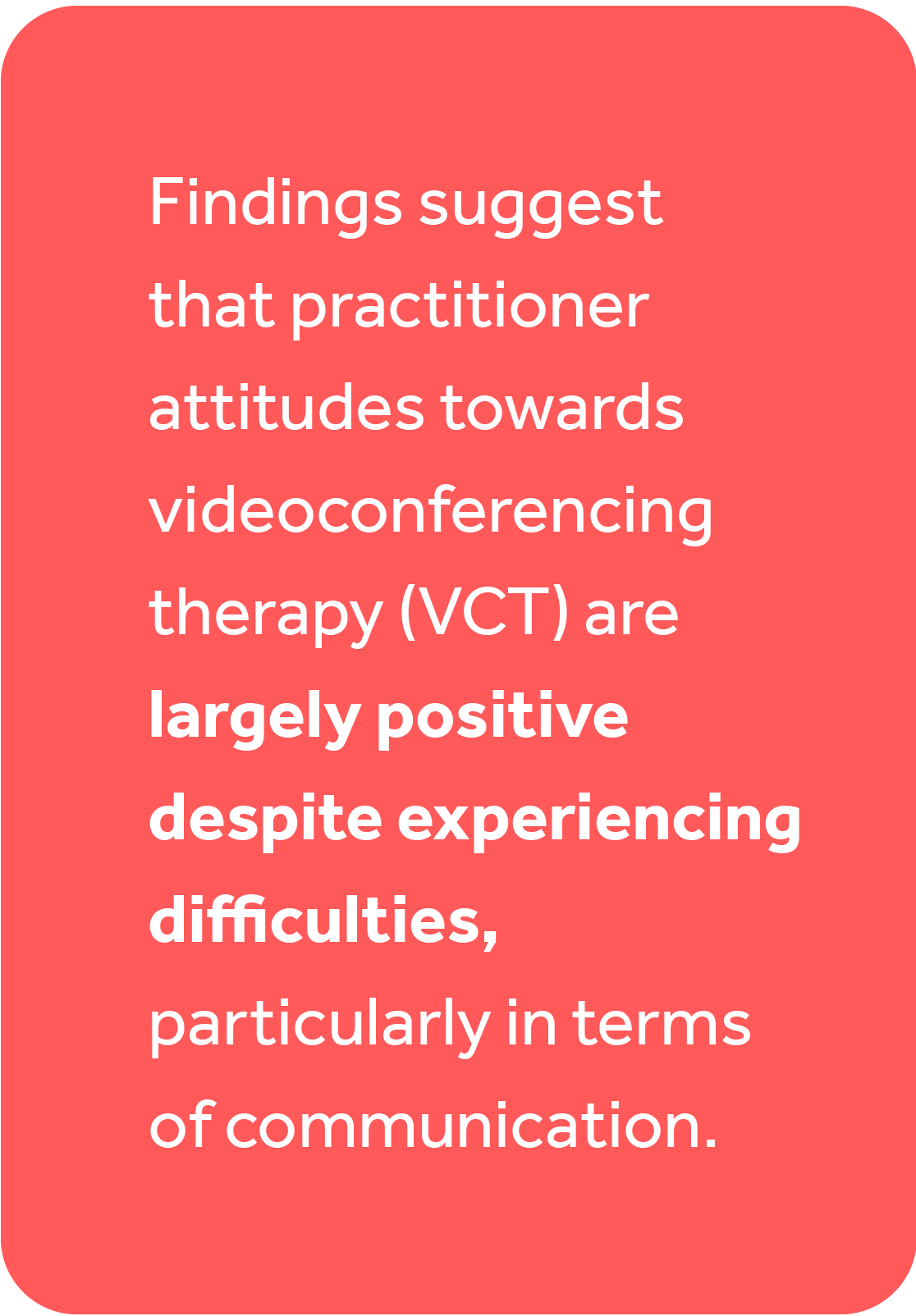Qualitative Research
Exploring mental health practitioners’ use of and views on videoconferencing platforms to conduct therapeutic client sessions.
︎ 6 Months | Higher Diploma Interaction Design | Module Result 74%
︎ My role
Collaborating with Supervisor to Develop Study Design, Literature Review, Submitting Ethics Application, Develop Interview Guide, Conduct Remote Interviews over Zoom, Thematic Analysis using NVivo Software, Project Management, Dissertation Writing
︎ My role
Collaborating with Supervisor to Develop Study Design, Literature Review, Submitting Ethics Application, Develop Interview Guide, Conduct Remote Interviews over Zoom, Thematic Analysis using NVivo Software, Project Management, Dissertation Writing
Below is a summary of steps undertaken and reflections from project research diary:
︎ Project stages
- Discovering and Refining Research Topic
- Literature Review & Formation of Research Questions
- Data Collection
- Data Analysis
- Dissertation Writing and Findings
- Project Reflections
1. Discovering and Refining Research Topic
Initial ideas
At beginning of process in September had no clear research topic, but had a preference for exploring subjects unrelated to my work as a graphic designer.
Narrowed down to 3 areas of interest:



︎Reflections
Last year struggled with open project brief as enthused by many possibilities present and even second guessed decision once made. Determined to be more decisive once project topic is chosen.
Further reading and tutorials narrowed down to two project outlines to share with tutors and classmates:


Tutor feedback was positive towards topic of chatbots in healthcare. While I’d no experience in the area of mental health it was of interest to me and felt it was a particularly relevant topic at present time in pandemic.
Feedback also made me aware of the ethical implications of this subject and how it would strongly influence the methodology selection. A questionnaire study was recommended as most appropriate.
Feedback also made me aware of the ethical implications of this subject and how it would strongly influence the methodology selection. A questionnaire study was recommended as most appropriate.
︎Reflections
Disappointed at prospect of carrying out a purely quantitative study, as enjoyed the hands-on nature and direct contact with study participants that came from the experience of usability testing last year.
Submitted Research Outline
Two research outlines submitted, as wasn’t sure the best direction. First a questionnaire study and second an experiment, both with different populations of focus.
Two research outlines submitted, as wasn’t sure the best direction. First a questionnaire study and second an experiment, both with different populations of focus.


Supervisor meeting and refining methods + population
First meeting with supervisor
Affinity diagramming used to help consider study design, after options discussed during first supervisor meeting ︎︎︎
First meeting with supervisor
- Raised consideration about aligning participants around chatbot technology as its so new
- Not ruling out qualitative methods yet
- Should select appropriate method to answer research question
- Discussed potential methods; survey, one-to-one interview, walkthrough and vignettes
Affinity diagramming used to help consider study design, after options discussed during first supervisor meeting ︎︎︎
Current research question ︎︎︎
![]()
Decided on mental healthcare professionals as study population and that interviews most suitable to answer current research question. Supervisor also noted a high survey response rate from professional group may be difficult to obtain. Woebot Health is the current technology of focus.

Decided on mental healthcare professionals as study population and that interviews most suitable to answer current research question. Supervisor also noted a high survey response rate from professional group may be difficult to obtain. Woebot Health is the current technology of focus.
Draft ethics form and new insights from practitioners
First draft ethics form submitted with study design and sample interview guide. Some questions adapted from existing surveys found during literature search.
Question themes;
Sample of app screens and questions from sample interview guide ︎︎︎
First draft ethics form submitted with study design and sample interview guide. Some questions adapted from existing surveys found during literature search.
Question themes;
- Current use of digital tools
-
Experience of videoconferencing software
-
Opinions of chatbots from app screens (used samples from mymind.org, Wysa and Woebot)
- Willingness to adopt chatbots
Sample of app screens and questions from sample interview guide ︎︎︎

In the meantime, I conducted informal phonecalls with 3 mental health professionals in my network to ask about digital technologies used in their work. This step was suggested by my supervisor to discover commonly used technologies.
Insights uncovered:



Due to discovery that
only common technology amongst practitioners is Zoom, supervisor suggested change focus of study to solely videoconferencing.
︎Reflections
This shift of technology focus was a considerable change as 8 weeks of research had gone into chatbot technology. Ethics application was due in 1 week so needed to do some speed reading on videoconferencing therapy to adjust project proposal.
From speaking with practitioners I knew this was the most relevant problem they’d faced regards technology in their work and through those conversations it didn’t even feel relevant to probe about chatbot technology.
Trusted supervisor’s advice that researching a technology practitioners had practical experience with would be a more worthwhile study.
Module readings also emphasised the need to have a flexible approach to research and adapt the project as required.
2. Literature Review & Study Focus
Due to shift of project focus needed further literature specifically around communicating over videoconferencing platforms and practitioner experience of videoconferencing in practice. Also looked back at relevant interaction design topics covered in past modules.︎View and download dissertation
Emerging from the review of literature this study will examine:


︎Reflections
At the time I found the literature review difficult to write and felt this was because it was my own empirical research project. On reflection, I was learning about an entirely new topic and to gain a decent understanding was time consuming.
Further activities during this period
- Ethics form passed with changes. Main ethical concerns were that practitioners could raise topics upsetting for researcher and that researcher is not familiar with clinical practice. Solution: extra lines added to study materials stating practitioners shouldn’t raise any topics about clients and that study was being conducted from a HCI perspective.
- Completed thematic analysis learning assignment: lesson that analysis takes longer than expected
3. Data Collection
2 pilot studies undertaken - first with non-clinician friend of researcher and second with clinician. Learnings: Felt more assured after pilot study with clinician as answers were richer. Some questions required small tweaking. Learned I needed to adjust the order of questions based on how interview unfolds.
︎︎︎ Interview script allowing all questions to be visible during interview. Created in response for the need to adapt the flow of questions based on how interview unfolding. Flicking between pages on a word document on screen didn’t allow for the same flexibility.
Interview Guide
Literature review feedback was helpful to understand the need to mirror my interview guide to reflect my research questions to ensure relevant answers emerging.
Sample questions:



Recruitment
Recruitment took place via a purposeful sampling approach and a gatekeeper with experience as a mental health professional and of VC platforms posted a recruitment advert in relevant social media groups.
![]()
Interviews
Learned from each interview and tried to adapt during the process.
︎Reflections
There’s plenty of room to improve my interviewing technique and feel it’s a difficult skill to master. I enjoyed the interview process, meeting new people and listening to their perspectives.
Recruitment took place via a purposeful sampling approach and a gatekeeper with experience as a mental health professional and of VC platforms posted a recruitment advert in relevant social media groups.

Interviews
Learned from each interview and tried to adapt during the process.
︎Reflections
There’s plenty of room to improve my interviewing technique and feel it’s a difficult skill to master. I enjoyed the interview process, meeting new people and listening to their perspectives.
4. Data Analysis
Learned basic of NVivo from YouTube, learned about codebooks, memos and code stripes. Feel there are some not-so-obvious themes emerging early on.Going back over audio to correct transcripts was very draining and coding took a lot longer than expected. Worried the meaning in my data is getting a bit lost by going so granular through the codes, but trying to do constant comparison with the memos and transcripts to ensure this doesn’t happen.

5. Dissertation Writing & Findings
Submitted a draft of one theme from results section and appendix showing thematic analysis to ensure I was on the right track.Thematic network diagram displaying the 10 basic, 5 organising and 1 global theme emerging from 16 unique codes identified during thematic analysis ︎︎︎

︎Reflections
Took a small break after submitted draft of results & appendix and found it difficult to get my head back into the data. It was easier to write results directly after the analysis had taken place.
Although it took time, getting the results and discussion section written felt like a big milestone reached. Supervisor’s feedback on draft dissertation enabled me to view my project from an alternative perspective, enhancing my own critical thinking.
Results



Recommendations
2 of 7 recommendations for platform design featured in dissertation.


6. Project Reflections
During this project there were many tasks that needed completion before further stages could be reached demanding strong project management skills. Despite these sequential tasks, I discovered that the research process is not necessary a linear one, as initial project stages involved learning about research in general alongside choosing a suitable research topic. When I submitted my ethics form draft, I was also in tandem speaking with gatekeepers to ascertain the role of technology in their work.I enjoyed learning about the intricacies of conducting a thematic analysis and how to sort data using Excel and later code data using NVivo. I strongly feel the skill of deriving themes from data is so useful in many contexts and something I can apply in future roles.
One thing that came up during this process is that I would go back to relevant journal articles at various stages and see new things or view them in a new light. I found this interesting and noted that it happened on a few occasions and think this displays a measure of how much I was learning around my topic during the process and about research in general.
Speaking to clinicians at early stages was a key moment that pivoted the entire project direction. It was imperative to learn about the real challenges and problems clinicians were facing rather than assuming a future technology would be a relevant focus of study. For me, this further emphasised the need to apply a user-centered design process when answering questions around people’s relationships with digital products or platforms through research.